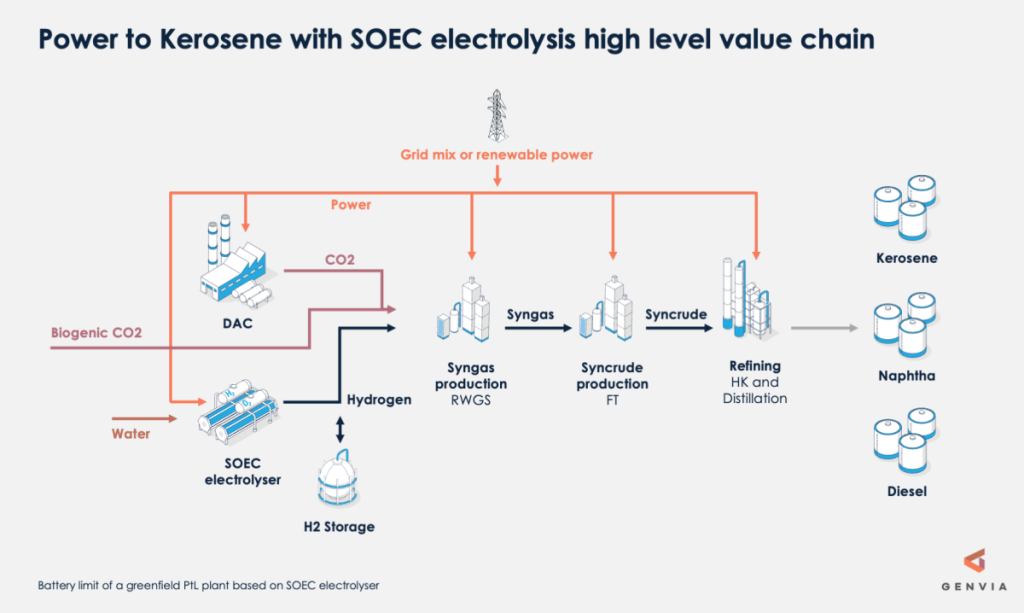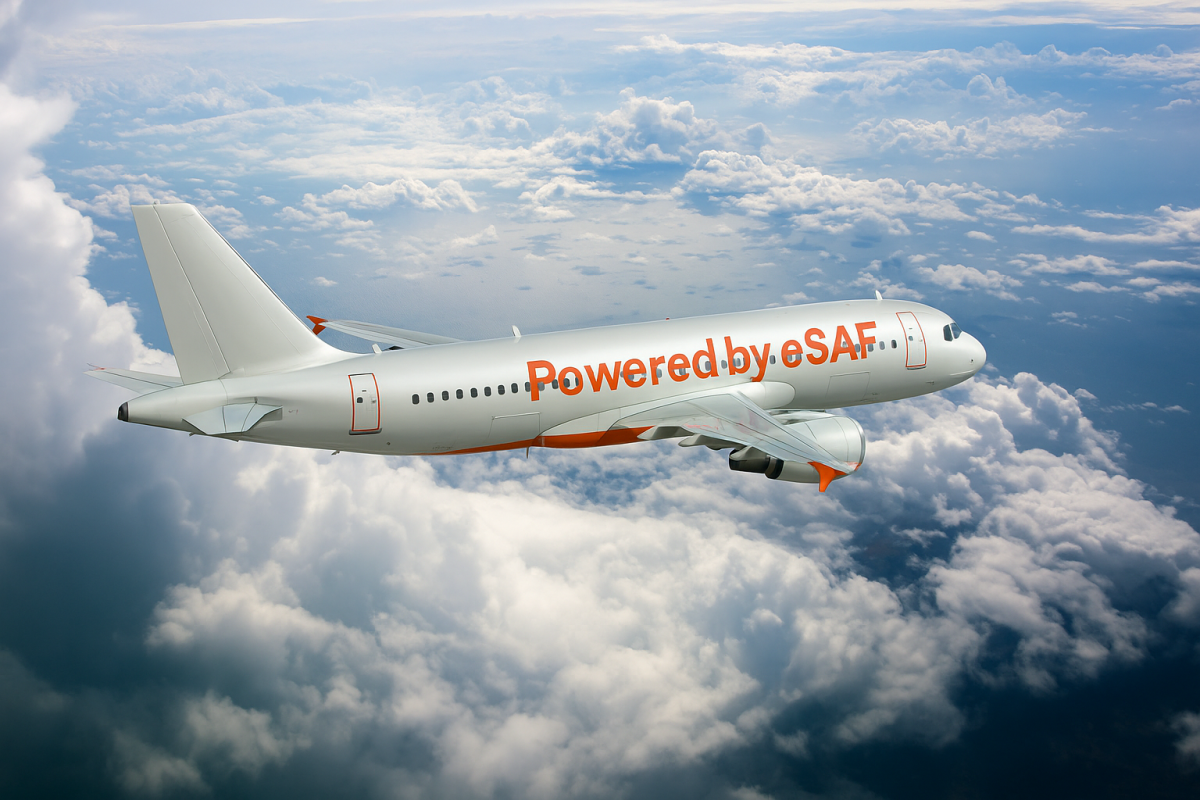Genvia and Airbus: How Solid Oxide Electrolysis Can Power the Future of Sustainable Aviation Fuel
In 2024, we announced our partnership with Airbus to explore how solid oxide electrolysis (SOEL) could support the production of hydrogen-based synthetic sustainable aviation fuel (eSAF)—also known as e-kerosene or e-jet fuel. We’re now pleased to share an update on the progress we’ve made so far.
Study 1 (2024): Unlocking the Potential of SOEL in eSAF Production
Our first joint study, supported by the Occitanie Region’s Innovation Projects programme, set out to evaluate how SOEL and co-electrolysis could improve the design and efficiency of eSAF production plants—particularly when compared to traditional low-temperature water electrolysis technologies like alkaline electrolysis.
We focused on a reference case for 2035, modelling an at-scale eSAF plant using the Fischer-Tropsch pathway to produce 150,000 tonnes of liquid fuel per year. This timeline reflects when the full eSAF value chain is expected to reach technical maturity and benefit from falling capital costs.

Diagram: High-level value chain for a Power-to-Liquid (PtL) eSAF plant using SOEC technology. This overview shows how electricity, water, and CO₂—either biogenic or captured from air—are converted into hydrogen, syngas, and eventually e-kerosene and other liquid fuels.
Key elements of the study included:
- Full plant-level analysis, from CO₂ input to e-jet and co-product refining
- Two power sourcing scenarios: grid-connected (excluding peak hours) vs. 100% renewables (wind + solar)
- Two CO₂ sourcing options: biogenic CO₂ or direct air capture (DAC) with associated heat requirements
- Evaluation of off-gas recycling and co-product upgrading routes
Multiple plant architectures were analysed using process and economic models, including sensitivity analysis on key parameters to understand cost impacts. We also looked at a small-scale demonstration setup with a shorter-term 2029 horizon.
The results confirmed that SOEL offers significant energy integration benefits in Fischer-Tropsch eSAF plants—leading to higher energy efficiency and lower levelized cost of kerosene (LCOK). Using co-electrolysis further improved plant performance.
Study 2 (2025): Extending the Scope with Methanol-to-Jet
In 2025, we carried out a second study to complement the first. This time, we expanded the analysis to cover the Methanol-to-Jet (MtJ) pathway and compared it to Fischer-Tropsch, with a particular focus on improving kerosene selectivity and minimising co-product output.
A key challenge of this phase was to explore what technical and project performance conditions would be required to bring LCOK below €2,000 per tonne after 2035.
The second study reinforced our earlier findings: SOEL is also a strong match for MtJ-based eSAF production. Both pathways—Fischer-Tropsch and Methanol-to-Jet—showed similar benefits in terms of heat integration and reduced LCOK when SOEL is used.
Key Learnings for the eSAF Industry
Like all hydrogen and eSAF projects, two factors stood out as the biggest drivers of cost:
- Electricity price
- Electrolyser system capacity factor (uptime)
Because every eSAF project will differ in terms of location, feedstocks, and technology choices, we ran multiple sensitivity analyses to understand how different configurations affect performance and cost. This approach will remain vital until more real-world data becomes available from operating eSAF plants.
One clear takeaway is that the choice of technology bricks—and how they affect the plant’s overall heat balance—has a major impact on efficiency. That’s why we strongly recommend that developers evaluate and optimise plant-level heat integration early in the project lifecycle.
The Role of SOEL—and What Comes Next
Both studies confirmed a key insight: integrating Genvia’s SOEL technology into eSAF plants is a promising way to reduce hydrogen production costs and boost overall efficiency—whether using Fischer-Tropsch or Methanol-to-Jet pathways.
These studies also gave us a clearer view of the project conditions where SOEL offers the most value—insights we’ll be bringing to our future engagements with eSAF developers.
As our technology continues to mature, we see hybrid plants—using both SOEL and other electrolyser types—as an important first step toward full-scale solid oxide integration.
Next, we’ll be sharing more technical findings from our work with Airbus, helping to inform the wider community and support the growth of sustainable aviation fuel.
We’d like to thank Hinicio, part of the Vulcain Engineering Group, for leading both studies and contributing their deep expertise in hydrogen and eSAF systems.



